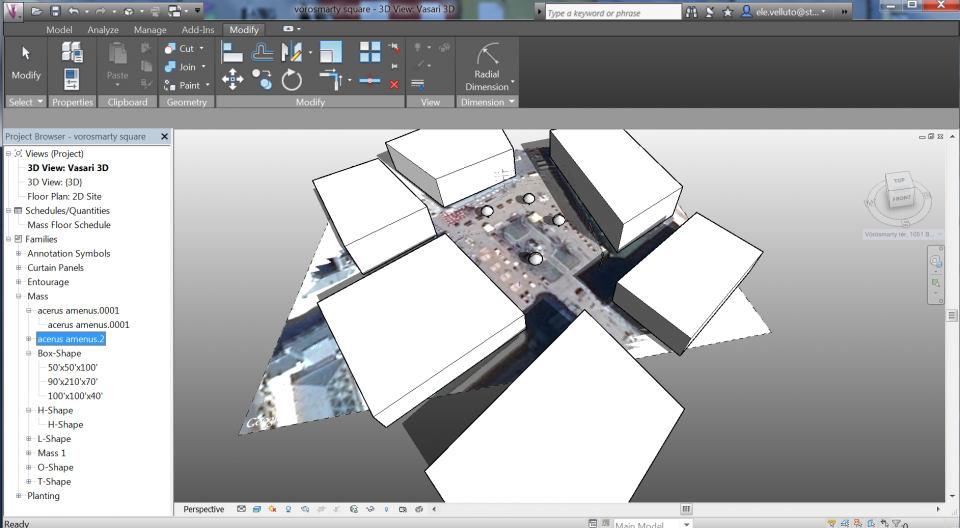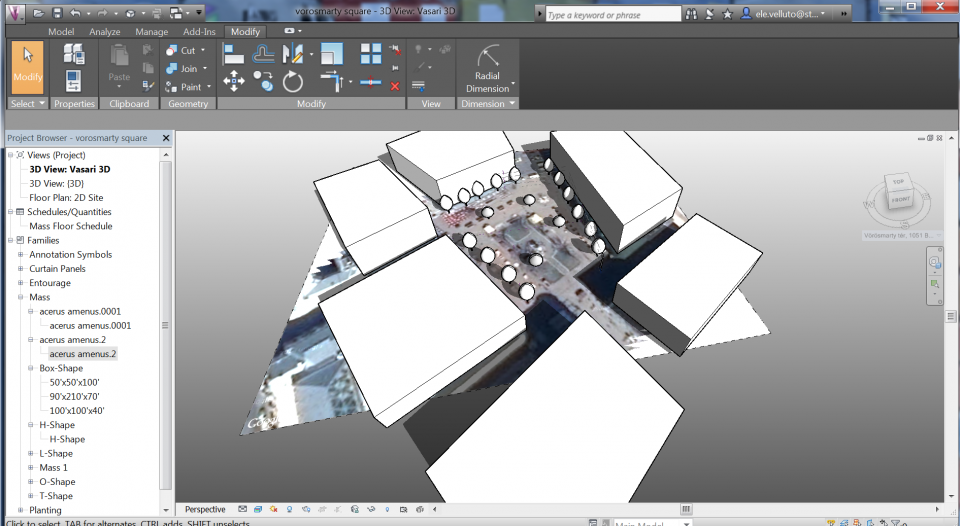Tu sei qui
Es_4_Vegetation model_Parametric Families_Acer Platanoides
Hi there,
Today I'm going to work on the vegetation. Vegetation is very relevant in a project when we want to analyse solar radiation and shadows.
To do that, it is possible to create a new Family in Vasari in order to model the chosen tree. Families are useful in modeling because we can create parametric elements and import them into the project. We can then easily change their shape by editing the values.
The tree I choose to import in my project is the Acer platanoides, the maple tree.
The maple is a deciduous tree, so during summer it will create a shade, while in winter its leafs will fall, allowing the sun rays to filter in its branches.
Now let's get some numbers.

I choose a medium age tree, about 5 years. It is important, when we use vegetation to develop the building performance, to consider time. A young maple tree isn't taller than 3-4 meters. It takes at least 10 years to reach the adult age, where its height is 20 meters.
After taking the dimensions, I can start to model the tree on Vasari. To create a Family I start opening a new conceptual mass.
First, I set the unit dimensions.
Then I insert different levels at the quotes I choose.
I named the levels so that I can recognize them easier if I want to change their quote.
Now I can start to draw.
Setted the level "Terra" (= ground floor), I draw the first circumference that will be the base of the trunk.
Aligning the circumference to the level, I can change the quote of the circumference just by changing the quote of the level.
Now I set one of the vertical plane and I draw a line perpendicular to the levels I setted.
This line will be used as reference to create the form that will be the trunk.
Aligning the ending points of the line to the level "Terra" and to the level "Base Chioma" (=base of foliage), I can change the trunk height by changing the levels quotes.
For all the circumference that I draw, I add a parameter and I name it.
Then I set the radial dimesion of the circumference and connect it to the label "base tronco" that I just created.
In this way, I will be able to change the dimension of the circumference by changing the value on "properties".
Now I can select the lines and create the form that will be the trunk.
Here we are!
I can start to draw the other circumferences that characterize the tree's foliage. I draw them on the other levels and I align them to the levels.
As for the first circumference, I create a parameter for the others and connect them to the radius dimension.
All the circumference made, I select them and create the form.
As I said, the cool thing of parametric design is that I can change the model only by changing the value on the properties.
For example, I can shrink the circumference "Ampiezza massima chioma" (=maximum foliage widht). I go to Properties, Family Types, and change the value of the chosen parameter.
Et voilà! the foliage is reduced.
The Family is made. Now I can start to import the trees into the project.

I can start import the Family by clicking Families, Mass and then choose the mass I made.
Theese are young trees though, so if I want to insert an adult tree, I can edit the family I created by going back on the tree model.

I changed the quote of the levels and the widht of the circumference in trhe middle of the foliage. Consequently I save this model with a new name.
After that, I can import the tree model into the project by clicking on the tab on the left.
Then I'm ready to insert the adult tree in my project wherever I want.
Having different kind of trees at different ages can be interesting for us in order to understand how much light will hit the buildings when the tree is young and when it is adult.

Spring Equinox 10 am
Here it is shown how much the two tree models are different and how much more shadow the adult trees create. 
Spring Equinox 3 pm
| Allegato | Dimensione |
|---|---|
| 312 KB |
